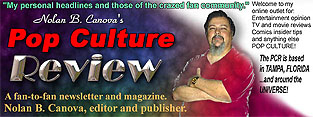

 |  |
 | |||
Howdy there, folks. Spider-Man came in fifth place last weekend at the box office, with an estimated $10 million take. Itís simply astounding that a comic book movie should be on its way to $400 million so quickly, beating out so many recent films in its monetary gain even topping records from previous comic-to-film endeavors such as Batman (and this is counting inflation). Itís staggering, really and weíre only just past day 38 of its release. Getting back to the column, weíre finally nearing the end of the road for Spider-Man collections in print. The last bit of business to discuss is what Marvel has managed to bring us today, the modern classics of the arachnid superhero of Manhattan. As I have mentioned in the past, with the departure of such noted artists as Todd McFarlane (Spider-Man) and Jim Lee (X-Men) from their top tier titles, Marvel found themselves in a deep dark hole they found themselves unable to dig out from for nearly a decade. Having handed these same artists the key to the kingdom, that is complete creative control, editorial had managed to drive out most of the writers who had helped build their mighty House of Ideas. With nary a veteran writer or artist handy to take the books into their bold new directions, many of them crashed and burned. If the creative failure didnít hit them right away, the industry crash in the middle 90ís sure put them under. By the beginning of 2001, new Marvel editor-in-chief Joe Quesada had decided it was high time to place the Spider-Man franchise back on the right track, stating as Spider-Man goes, Marvel Comics goes with it. In a bold move, the EIC replaced the previous Spider-Man editor Ralph Macchio with the highly reputable Axel Alonso, a DC editor working on the Vertigo line for mature readers. After the departure of the previous core title writer, Quesada brought in the critically acclaimed writer/producer J. Michael Straczynski (TVís Babylon 5). Joining Straczynski on Amazing Spider-Man was the extraordinary artistic talent of John Romita Jr., who had actually managed to stick with the book through the more tumultuous times. Adding to the mix was the creative team of Peter Parker: Spider-Man, writer Paul Jenkins (Inhumans) and penciler Mark Buckingham. Despite a relatively harsh leveling of the Spider-Man office, the Peter Parker title - which focused on more personal stories of the superhero - was deemed perfect as is, with Alonso quoted saying if itís not broke, why fix it? To finish off their revised Spider-menu, Quesada and Alonso added an all-new title featuring short story arcs by a rotating cast of writers and/or artists, entitled Spider-Manís Tangled Web. In April of 2001, the current line-up was launched and has been racking up critical acclaim ever since. In an effort to make this product more accessible to as wide an audience as possible, the new Marvel regime planned to offer all their newest and well-received titles in collected formats almost immediately. If the demand was enough, the inevitable trade paperback (or hardcover in some cases) might even be preceded by a smaller collection of 3 or so introductory issues. In this case, of course, weíre going to discuss the more complete trade editions. Letís begin, shall we?
Next edition will be the final entry on this particular subject. Weíll touch up on Paul Jenkinsí introduction and contributions into the Spider-Man mythos, as well as the two incredibly unique Tangled Web volumes already waiting for you at your local bookstore. Until then, please check out my previous articles in this series (Part 1 and Part 2) if you havenít already. The previous entry has been updated as I neglected to include cover photos for the books mentioned there on the first go around.
| |||